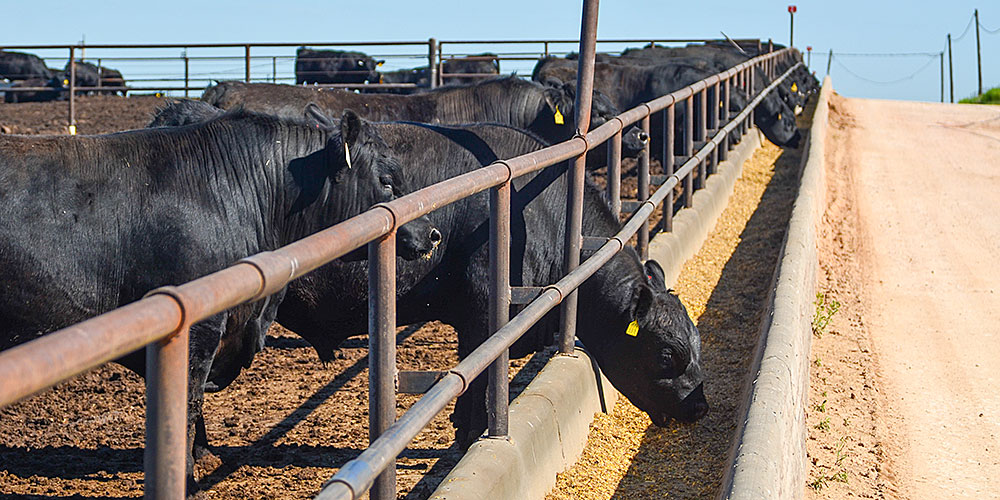
Unlock Gain Potential By Monitoring Feed Intake
Simple observations and strategies can help turn around results — and profit.
When average daily gain (ADG) fails to meet expectations, it’s crucial for feedlot managers and nutritionists to gather clues from feed intake. This will help guide strategies to improve performance and ultimately help make decisions that offer the potential for an improved bottom line.
Feed intake is an important management tool because it can be monitored daily, while weight gain cannot, said Richard Zinn, University of California–Davis Department of Animal Science. If an operation has determined what daily intake should be for a set of cattle, it can better manage the pen. Unfortunately, the amount of activity and responsibilities at a typical feedlot make this difficult.
“Most feedlots don’t do a very good job of interpreting changes in feed intake on a day-to-day basis and relating that to what’s happening in terms of animal performance,” Zinn said.
So, making it a point of emphasis offers potential. As Zinn puts it, the relationship between intake and growth performance is very strong, and the difference between expected daily intake and actual intake can be revealing.
“If the observed intake is greater than the expected intake for any degree of performance, then we know that the efficiency of energy utilization is poor,” Zinn said.
Simple steps to improve intake
To start, feedlot managers can give cattle something as simple as space — an average of 10 to 12 square meters per animal, Zinn said. When animal density is greater than that, there is an intake problem. Also, allow for adequate drinking space to support increased feed intake.
When it comes to a feeding schedule, Zinn recommends feeding an animal throughout the entire day in a period of seven hours. Consistency in the feeding schedule from day to day is also critical for proper intake.
Zinn noted that, in his experience, feedlots sometimes sacrifice intake and ADG for reasons such as reducing metabolics or digestives, which he considers a big mistake. He says nutritionists should work with feedlot managers to incorporate feed additives and growth implants to improve feed intake and efficient weight gain.
“We emphasize that the important thing in a feedlot is to maximize average daily gain and that by doing that they maximize net return,” Zinn said.
The importance of always focusing on intake
Average daily gain is a highly predictable function of intake, Zinn said. If it’s a priority, performance can improve.
“There is nothing that science has discovered in animal nutrition that is more predictable than the relationship between energy intake and animal performance,” Zinn said.
A 2% difference in energy intake in conventional feedlot cattle is about a $9 difference per head in net return, he said.
“We can’t trifle with it. It’s something that we haven’t paid attention to as much as we should,” Zinn said.
Editor’s note: This article is from Zoetis. Photo by Kasey Brown.























